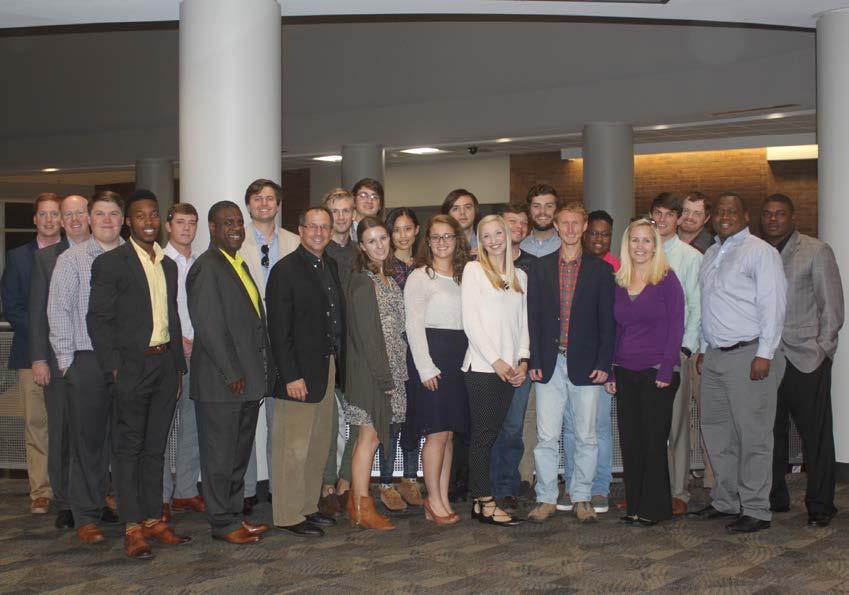
4 minute read
A Plan for Reclamation
By Jeffrey Rupp
Columbus sits on the banks of the Tombigbee River just 25 minutes east of Mississippi State University. The city has long been known for its hospitality and grand antebellum mansions. It is home to Columbus Air Force Base and the Mississippi University for Women, and it is the birthplace of playwright Tennessee Williams.
Like many cities, it relied heavily on manufacturing and industry to fuel its economic growth in the 20th century. Along with the economic benefits came an environmental cost. For 75 years, a chemical company operated a wood treatment plant in Columbus. During that time, creosote and other hazardous materials leached into the soil and groundwater, contaminating the area and parts of the surrounding neighborhoods. The plant closed, and in 2011, the U.S. Environmental Protection Agency (EPA) declared the area a Superfund site.
The Multistate Environmental Response Trust, established with funds from legal settlements, oversees a number of “brownfield” sites around the country. The Trust focuses on not only the remediation of a property, but also on ensuring the local community is served by whatever reuse plan is developed. J5, a local project management firm, was brought in to make sure any redevelopment plan for the Columbus site had input from the surrounding – mostly poor – neighborhoods.
J5 founder and CEO Jabari Edwards reached out to the Outreach office of MSU’s College of Business for assistance.
“The College of Business has a reputation for working with communities around the state, and the Multistate Trust believed they would be a valuable partner,” says Edwards.
As a land-grant institution, Mississippi State seeks ways to give back to the citizens who support it, and it was readily apparent that this was an opportunity for the University to serve the people of Mississippi in a meaningful way.
Under the guidance of Professor of Management Dr. Barbara Spencer, a team of MBA students started looking at the funding piece of the puzzle. It began with community meetings to give a voice to those living in and around the affected area. What types of businesses and services did they want to see in a redevelopment plan?
The MBA teams then set about the task of researching finance and funding options to realize these dreams.
It soon became apparent that, while the business students could do the research and crunch the numbers, there was another partner on campus that could really bring the ideas to life. The COB Outreach office contacted Michael Seymour from the Department of Landscape Architecture, and a partnership was born.

The MBA Architecture team
“This is the type of work that our students need to be involved in, and it’s the type of project that, as a society, I think we should dedicate more resources to,” says Seymour. “This project was an opportunity to contribute to a better future for that site and its neighbors.”
Once the alliance was struck, the two teams of students got to work. It began with a series of meetings with residents living near the contaminated site. Attendees were asked how they would like the site redeveloped. Ideas included a library, a job training facility, greenspace, a community garden, a small grocery store and a health clinic.
While funds are set aside for remediation of the property, they are restricted from being used to support private enterprise. The MBA students began researching how to finance the residents’ ideas using grants, community loan funds and more traditional financial tools. The landscape architecture students started sketching out how all those ideas might look and work together. Periodically, the residents were shown the renderings. Suggestions were made, and items were added or taken out. It was a very fluid, collaborative process designed to be as inclusive as possible.
“I really hope the students remember the feeling of helping an underserved community, and hopefully that’s something they’ll take with them,” says Seymour. “This also is the kind of site that students are likely to be working with in the future, where there are many layers that have to be peeled back to start to gain an understanding of the complicated economic, environmental and social issues that created it.”
For the MBA students, there were also many real world challenges. They learned that in the business world there are no magic answers to solving difficult community issues with financial considerations. Managing expectations while doing the best possible work for the client is a valuable lesson – one that can sometimes only be learned outside the classroom.
In the end, each student group presented a final report to the community, J5, the EPA and the Multistate Trust.
What were the results?
“The students from both the College of Business and the Department of Landscape Architecture became fully engaged throughout this entire process,” states Edwards. “They listened to the community and allowed the information that they gathered to drive the results. The MBA team provided a detailed market study that can be used as a significant resource for any developer trying to redevelop the site; while the landscape architecture students literally painted a picture of hope for the future for the community.”

Conceptual Site Plan
The EPA’s Charles King remarks, “This is a very comprehensive redevelopment document. In my 29 years as a Project Manager, I do not recall reviewing, or even hearing about, a redevelopment document with this much detail.”

Making a site visit. Site design and perspective images from “Reclamation” document
Photo courtesy of Jeffrey Rupp
While it can’t be said for certain what will happen with the property in the immediate future, there is now a blueprint, which shows a way forward.
Jeffrey Rupp is Director of Outreach for the College of Business and the former Mayor of Columbus.

